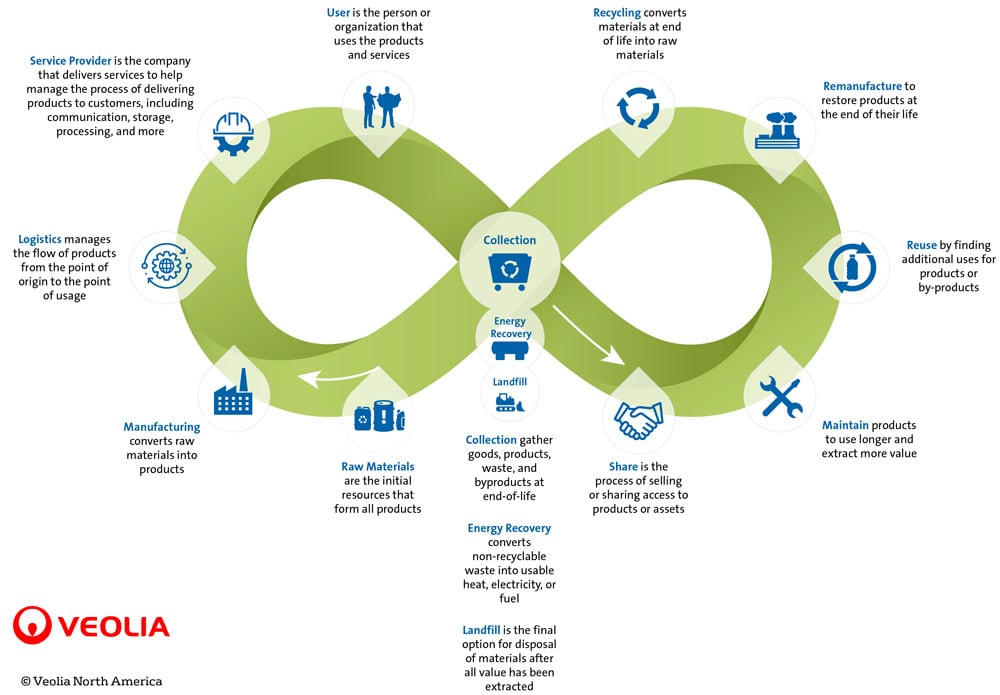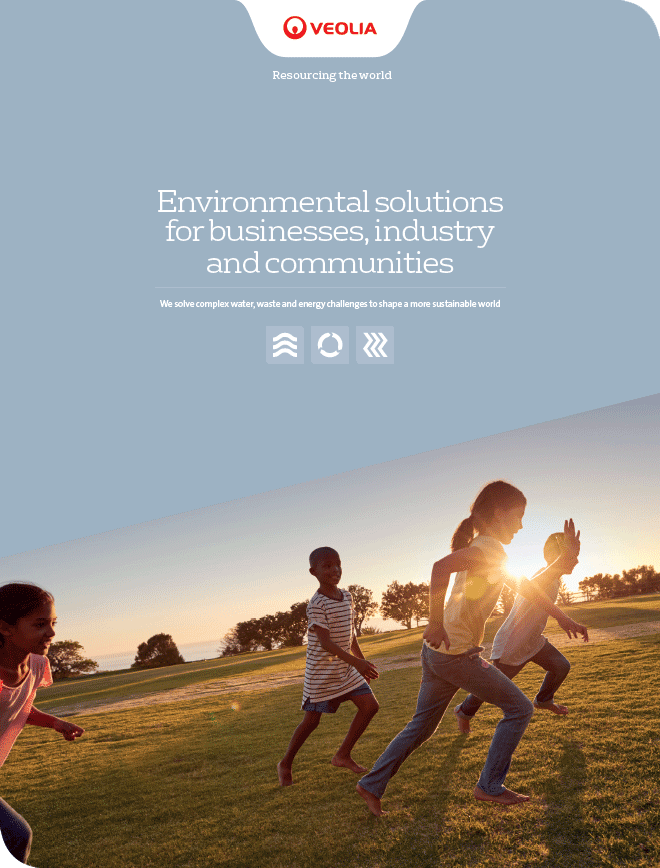How the Environmental, Health, and Safety Field Has Changed
Over the years, Veolia has seen the field of environmental, health, and safety (EHS) change significantly. Due to consumer and societal demands, there has been a persistent push for greater sustainability, increased environmental remediation, and shifting towards a more circular economy. This push has led to a larger number of environmental safety regulations and incentives to reduce and recycle waste, recover energy, and extract more value out of existing goods and resources.
The move toward greater environmental awareness and consciousness has also been accompanied by a larger focus on the health and safety of workers. Both of these developments have led to digitization, as programs and tools have become necessary to ensure compliance, to meet sustainability goals, and to increase safety, cleanliness, and efficiencies in operations.
In the ensuing years, EHS practitioners have become EHS&S, with the second S standing for sustainability professionals. Today’s EHS&S business programs include a wide variety of responsibilities primarily focused on waste materials, many of which support sustainable, circular economy efforts.
Thoughts from Arlene Farrar
Arlene Farrar, Director of Environmental Health and Safety at Abbott, a leading medical devices company, shares her views on how the EHS field has changed over the years. Working in operations for Abbott’s Diagnostics Division, Ms. Farrar oversees compliance with safety and environmental regulations for five manufacturing facilities and two distribution centers across the globe. Her team ensures the safety of employees in those facilities, monitors compliance with safety and environmental regulations, and is constantly searching for more sustainable and safer solutions for facility management, energy procurement, and facilities.
Ms. Farrar has been the Director of EHS at Abbott for 3 years, but has worked in the EHS field for over 30 years. During this period, the EHS field has evolved with some significant changes, which she describes.
How our view of EHS has changed
One of the most widespread developments that Ms. Farrar has seen over the past 35 years is an increase in specialization.
“When I first got into the EHS field, I did everything. I did air emissions, groundwater monitoring, hazardous waste removal, recycling, fuel recovery, you name it,” explains Farrar. “What has really changed over the years is the degree of specialization within the field. Now there is such breadth that you have to go deeper in a specific area. I was able to handle all those roles earlier in my career. I would not be able to do it myself today.
“Now, the field is much more complex. With the added complexity, it’s harder for one person to have sufficient comprehensive knowledge about water safety, air emissions, proper waste removal and management. The philosophy has changed from ‘going a mile wide and an inch deep’ to ‘going an inch wide and a mile deep,’ necessitating even more specialization and compartmentalization.”
Ms. Farrar believes this change came about primarily due to two reasons. “First, as a society, we have developed a greater appreciation for environmental health and safety, which has led to a greater number of regulations and safeguards. Second, companies have grown to take environmental concerns more seriously and put extra effort into developing safer, more environmentally friendly solutions. Because EHS is more on the radar now, and we know more about it than we did 20 or 30 years ago, more resources are devoted towards it, leading to a trend in increased specialization,” she notes.
EHS teams are everywhere
Farrar also describes how companies that have EHS personnel today would not have had them 10 to 20 years ago. It’s no longer only organizations like Abbott that have an EHS staff.
“You would never have found EHS people at Amazon, for example,” she says. “Now, the mentality is that, because they may be shipping dangerous goods, they need an EHS person to ensure their facilities and employees are safe.”
Facilities used to have one EHS specialist for approximately every 1,000 employees. Today, that ratio has shrunk to about one EHS specialist for every 200 to 300 employees.
Digitalization of EHS: the good and bad
Another way that the EHS field has changed over the past 35 years is to rely increasingly on electronic systems and computers. In Farrar’s view, this development has been a phenomenal advantage for making the collection, organization, and management of data much easier. It’s simply easier to access and compare data than it was when the processes were more manual.
The only possible downside, according to Farrar, is that computers have a tendency to limit face to face interactions, which are necessary for the employee health and safety aspects of the job.
“In order to be effective at ensuring safety, you have to be out on the plant floor,” says Farrar. “You have to observe people, and they have to know who you are. They have to trust you, and you have to have face to face interactions. They have to be comfortable enough with you to bring up concerns to you personally.”
She believes that the best way to ensure a truly safe jobsite is for EHS team members to spend time physically on the plant floor, developing trust with the other employees, instead of sitting behind a computer all day. “For most of the “E” part of the job you can sit behind a desk, but the “H” and “S” require in person interaction.” she notes.
The move towards sustainability and circularity
The terms “sustainability” and “circularity” were first incorporated into the EHS world in the late 1990s and early 2000s. According to Farrar, this change in verbiage resulted from the maturation of the EHS field. “Companies wanted to do something more than simply be reactive and compliance driven. They wanted to get out ahead of the curve and start being proactive on the “E” side of EHS,” she explains.

There was a drive within organizations to be better stewards of our resources and planet, and cultures began to shift towards becoming more environmentally conscious.
Sustainability is largely giving way to the even newer idea of circular economy. This model attempts to extract the most value possible out of existing resources and to limit the introduction of virgin resources as much as possible. This shift has large implications for the waste companies produce, and, in turn, it has large implications for EHS. The move towards circular economies will likely be one of the primary focuses and changes in the EHS field as we move further into the 21st century.



